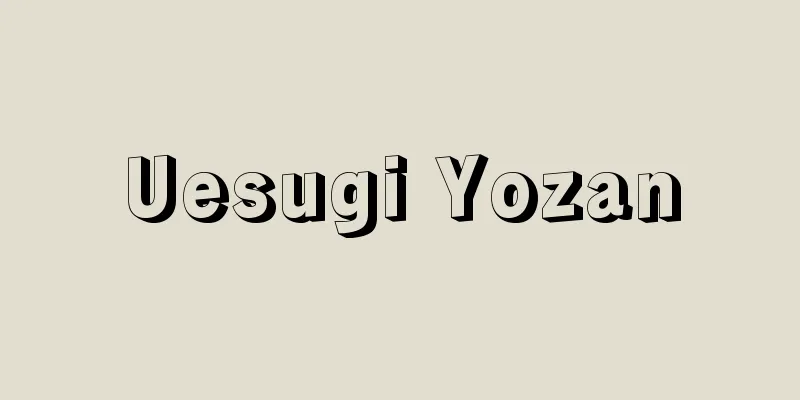Ise Katagami

|
In the area of Shiroko-cho and Jike-cho facing Ise Bay in Suzuka City, Mie Prefecture, dyeing stencils used for small and medium-sized patterns have been produced since ancient times, and are known as Ise-gata and Shirako-gata. The stencil merchants of Ise, which was not adjacent to the dyeing industry, had aspirations of supplying stencils to dyeing workshops throughout the country, but during the Edo period, this region came under the control of the Kishu Tokugawa clan, and the Kishu domain gave special patronage to the nationwide peddling of these stencil merchants. The Kishu Domain provided them with illustrated seals to show that their goods were special, baggage books so that they could peddle at the same cost as samurai, and even issued "passing stamps" that allowed them to pass through checkpoints freely, as well as identification tags that specified the products they could sell. Meanwhile, stencil merchants organized into associations, and strengthened their unity by establishing association rules to prevent the outflow of their skills to other regions, prevent price drops, and prohibit the infringement of each merchant's sales space, and attempted to monopolize the peddling of dyeing stencils throughout the country. Of these, the time when the Kishu family's authority was the most important was in 1753 (the 3rd year of the Horeki era), but from around 1801-03 (the 1st to 3rd year of the Kyowa era), some merchants began to set up stores in Edo, and even the Ise stencil merchant association was forced to officially recognize 12 associations that were working away from home in Edo in 1826 (the 9th year of the Bunsei era). However, this meant that people from Ise, who were not adjacent to the dyeing areas, opened shops in areas of direct consumption, which had an effect on improving their artistic and technical skills. It is likely that the improved skills were then brought back to Ise and sold all over the country, which helped to raise the standard of stencil dyeing nationwide. The fact that it is still called Ise-gata today is likely due to this tradition as well as the existence of many stencil carvers. However, it is not clear when stencil techniques first emerged in this area, as there are only legendary stories. When discussing its history, the entries in the "Katauri Kyonennen Nen-nen Rekicho" are cited, and some say that it first appeared in the Heian period, but when examining various remains and considering that the two stencils in the Genroku Nenki are considered to be the oldest remains, it is hard to believe that this document, which is said to have been written in 1768, dates back 1,000 years. [Nobuhiko Sugihara] "Study of Ise Katagami by Shiro Nakata (1970, Ise Katagami History Publication Society)" "Ise Katagami: Traditional Crafts Dyeing and Weaving Volume 10 by Nobuhiko Sugihara (1974, Clothing Life Research Society)" This museum introduces Ise Katagami, a traditional craft from the Shirako and Terakacho areas of Suzuka City. It opened in 1997 (Heisei 9) and occupies the residence of the Terao family, who were Shirako's leading stencil paper wholesalers at the end of the Edo period. It stores and exhibits stencil paper materials, kimonos, and more. Suzuka City, Mie Prefecture © Mie Prefecture Tourism Association "> Ise Katagami Museum Source: Shogakukan Encyclopedia Nipponica About Encyclopedia Nipponica Information | Legend |
|
三重県鈴鹿(すずか)市の伊勢湾に面した白子(しろこ)町、寺家(じけ)町一帯には、早くから小紋(こもん)や中形(ちゅうがた)などに用いる染色用型紙の生産があり、伊勢型、白子型といって知られている。 染色業に隣接していない伊勢の型売商人は、全国の染色工房に型紙を供給することを念願していたが、江戸時代この地方が紀州徳川家の領するところとなり、紀州藩はこの型売商の全国的な行商に特別の庇護(ひご)を与えた。 紀州藩は、その行商荷物が特別のものであることを示すための絵符、武家並みの経費で行商できるよう駄賃帳を交付し、さらには関所を自由に通行できる「通り切手」やおのおのの売り物を定めた鑑札を交付した。一方、型売商人は仲間株を組織し、技術の他地方への流出防止、値くずれ防止やおのおのの売り場侵害を禁ずるなどの仲間定(なかまさだめ)を設けて結束を固め、全国に染色用型紙の独占的行商を試みている。そのうち、もっとも紀州家の権威によったのは1753年(宝暦3)の時点であるが、1801~03年(享和1~3)ごろから江戸店を設ける者が出、さすがの伊勢の型売(かたうり)株仲間(なかま)も、1826年(文政9)江戸出稼ぎ12株を公認せざるをえなくなった。しかしこのことは、染色地に隣接しない伊勢の人などが、直接消費地に店を開いたことになり、その芸術的技術的な向上に効果があった。おそらくこうして高められた技術は伊勢にも還元され、全国に行商されることによって、全国的に型染めの水準の向上に役だったものと考えられる。 今日なお伊勢型とよばせるのは、多くの型彫師の存在とともにかかる伝統によるものであろう。しかしながら、この地にいつごろから型紙技術がおこったのか、伝説的な話のみで明確でない。その歴史を語るに「形売共年数年暦控帳」の記載が引用され、その発現を平安時代とする話もあるが、諸遺例の検討や元禄(げんろく)年記の型紙2枚をもって最古の遺例とすることから、明和(めいわ)5年(1768)記述とされるこの文書の1000年をさかのぼった記述は、にわかには信じがたい。 [杉原信彦] 『中田四朗著『伊勢型紙の研究』(1970・伊勢型紙の歴史刊行会)』▽『杉原信彦著『伊勢型紙 伝統工芸染織篇 10』(1974・衣生活研究会)』 鈴鹿市白子町、寺家町一帯の伝統工芸である伊勢型紙を紹介する資料館。江戸時代末期に白子屈指の型紙問屋であった寺尾家の住宅を利用し、1997年(平成9)に開館した。型紙資料や着物などを収蔵・展示している。三重県鈴鹿市©公益社団法人三重県観光連盟"> 伊勢型紙資料館 出典 小学館 日本大百科全書(ニッポニカ)日本大百科全書(ニッポニカ)について 情報 | 凡例 |
Recommend
Lobbying - Lobbying (English spelling)
This is an extra-legal activity that promotes or ...
Rotary forging - Kaitentanzo
… Forging is the basis of new manufacturing techn...
Salix chaenomeloides (English)
…[Tetsuichi Yahara]. … *Some of the terminology t...
Noordhollands Kanaal (English spelling)
...It is 15.5m deep and 170m wide, and can handle...
Asakusa
The name of a district in Taito Ward, Tokyo. In t...
Matsumae Domain
A small Tozama domain based in Matsumae, Hokkaido...
Ventilation mechanics test - Ventilation mechanics test
...However, the lungs have a large functional res...
Oda Family - Odake
...In the past, people built huts on the mountain...
Stone stand - Ishidate
Same as "stonework". Source: About Shoga...
Stink gland
A gland that an animal has that secretes a liquid...
Totonaco (English spelling)
Indigenous people of Macro Maya descent who live i...
Golden Snake
…In 1934, he was expelled from the country due to...
Intelligence agency - information agency
A national organization that collects, analyzes, ...
Please refrain from meeting me
…In addition, when a samurai's close relative...
Diphros okladias (English spelling)
…Egyptian chairs were adopted into the life of an...









